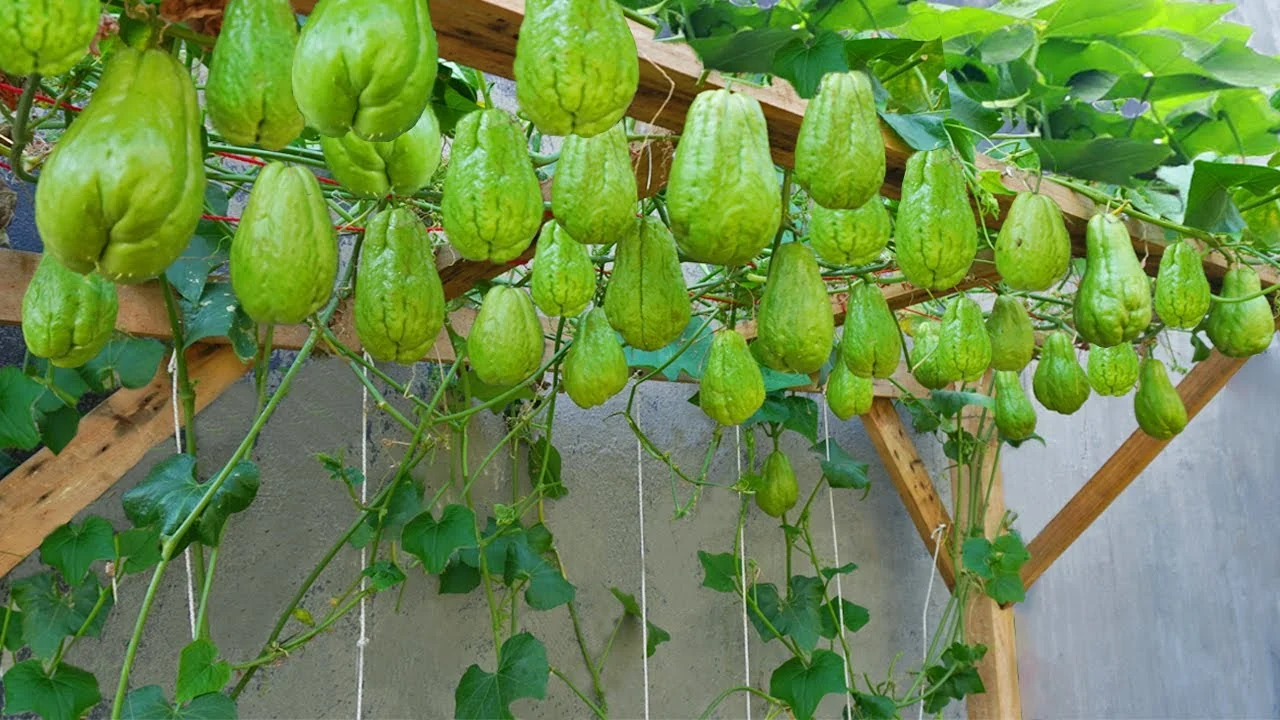Growing Chayote in Plastic Containers: A Complete Guide for Small Spaces
Chayote, often known as vegetable pear or mirliton, is a versatile and nutritious squash that thrives well in smaller environments. Cultivating chayote in plastic containers makes it accessible for those without large garden spaces. Follow this detailed guide to ensure optimal growth and a fruitful harvest of chayote in your containers.
1. Selecting the Ideal Container
- Container Size: Chayote plants have extensive root systems and need ample space. Choose a plastic container with a capacity of at least 20-25 gallons (75-95 liters) and ensure it is 18-24 inches deep and wide.
- Drainage: To prevent waterlogging and root rot, drill multiple holes in the bottom of the container. Adding a layer of gravel or small stones at the base can also enhance drainage.
2. Preparing the Soil
- Soil Mixture: Opt for a well-draining potting mix enriched with organic matter. A recommended blend is 50% garden soil, 30% compost, and 20% perlite or sand, which provides a balance of nutrients, aeration, and moisture retention.
- Soil pH: Chayote prefers slightly acidic to neutral soil, ideally with a pH of 5.5-7.0. Test the soil pH and adjust using lime to increase pH or sulfur to decrease it if needed.
3. Planting Your Chayote
- Choosing the Seed: Use a mature chayote fruit for planting. Select one with a small sprout emerging from the bottom.
- Planting Depth: Place the chayote in the container with the sprouted end down, about 3-4 inches deep. Lightly cover with soil, ensuring the top of the fruit remains above the surface to avoid rot.
- Spacing: If using a larger container for multiple plants, ensure each chayote has 2-3 feet of space around it.
4. Watering Requirements
- Regular Moisture: Chayote needs consistent moisture throughout its growth. Water deeply once or twice a week to keep the soil evenly moist, avoiding waterlogging.
- Mulching: Apply organic mulch, such as straw or shredded leaves, to help retain soil moisture and regulate temperature.
5. Supporting the Vines
- Support Structure: As a vigorous climber, chayote requires strong support. Install a sturdy trellis, bamboo poles, or a wire cage to guide the vines. Ensure the support is tall and robust since chayote vines can grow up to 30 feet long.
- Training Vines: Regularly train the vines by gently tying them to the support structure. This encourages vertical growth, improves air circulation, and enhances sunlight exposure, which can reduce disease risk.
6. Fertilizing for Optimal Growth
- Balanced Fertilizer: Apply a balanced, slow-release fertilizer (e.g., 10-10-10 NPK) every 4-6 weeks during the growing season.
- Organic Supplements: Enhance growth with liquid seaweed extract or fish emulsion every 2-3 weeks for better foliage and root development.
- Avoid Overfeeding: Be cautious with fertilizer amounts to prevent excessive foliage at the expense of fruit production.
7. Managing Pests and Diseases
- Common Pests: Watch for pests such as aphids, spider mites, and whiteflies. Control them with insecticidal soap or neem oil.
- Disease Prevention: Improve air circulation by spacing plants appropriately and pruning excess vines. Avoid overhead watering to minimize risks of fungal diseases like powdery mildew.
8. Pruning and Maintenance
- Routine Pruning: Regularly prune to remove dead or damaged leaves and encourage new growth. Remove side shoots that may hinder fruit production.
- Weeding: Keep the container weed-free to prevent competition for nutrients and water.
9. Harvesting Chayote
- Harvest Timing: Chayote typically matures 4-6 months after planting. Harvest the fruit when it reaches 4-6 inches in length and remains tender.
- Frequent Harvesting: Regularly picking fruit stimulates the plant to produce more. Use sharp scissors or a knife to cut the chayote, leaving a small stem attached.
10. Overwintering the Plant
- Protection from Cold: Chayote is sensitive to frost. In cold climates, move the container indoors or to a protected location during winter.
- Pruning Back: Trim the plant to its main stem and keep it in a cool, well-lit spot. Water sparingly to maintain slightly moist soil.
Conclusion Growing chayote in plastic containers is an excellent way to enjoy this nutritious vegetable in limited spaces. By selecting the right container, preparing suitable soil, and providing proper care, you can achieve a healthy, productive chayote plant and enjoy a bountiful harvest throughout the year.

